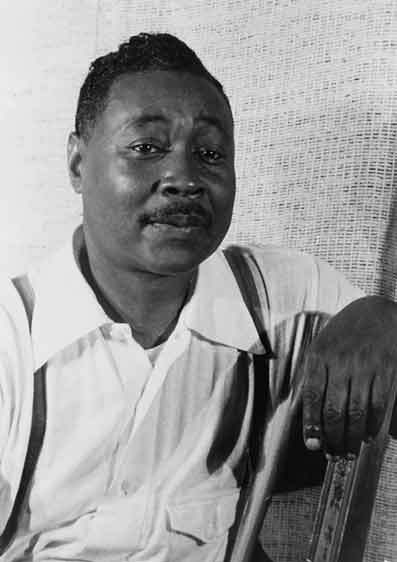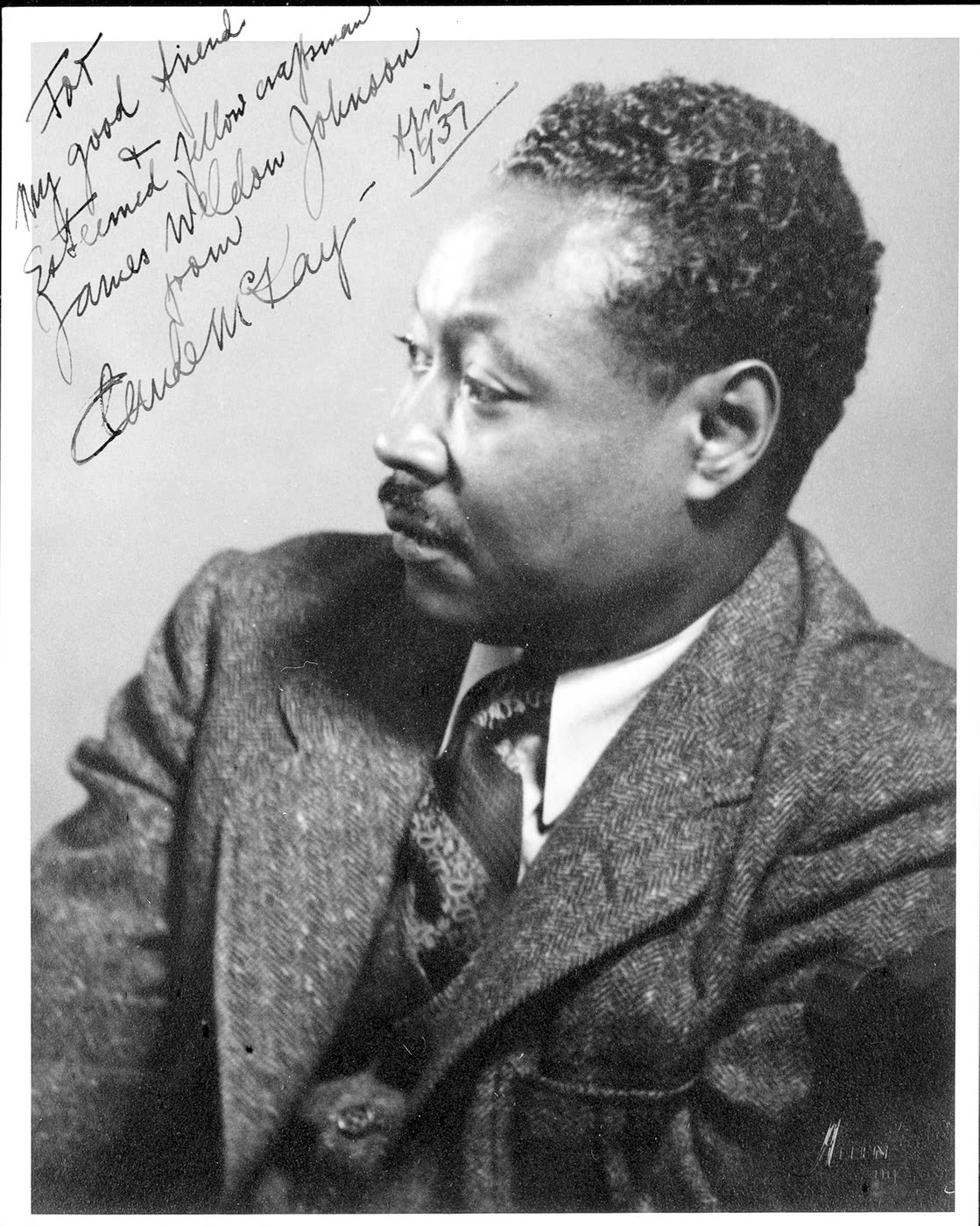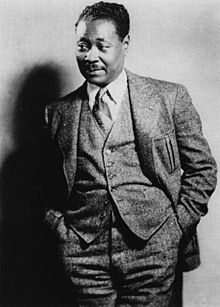<Back to Index>
- Writer Festus Claudius McKay (Claude McKay), 1889
PAGE SPONSOR



Claude McKay (born Festus Claudius McKay) (September 15, 1889- May 22, 1948) was a Jamaican - American writer and poet. He was a seminal figure in the Harlem Renaissance and wrote four novels: Home to Harlem (1928), a best seller which won the Harmon Gold Award for Literature, Banjo (1929), Banana Bottom (1933) and in 1941 the manuscript of a novel that has not yet been published called Amiable With Big Teeth: A Novel of the Love Affair Between the Communists and the Poor Black Sheep of Harlem. McKay also authored a collection of short stories, Gingertown (1932), and two autobiographical books, A Long Way from Home (1937) and Harlem: Negro Metropolis (1940). His 1922 book of poetry, Harlem Shadows, was among the first books published during the Harlem Renaissance. His poetry collection, Selected Poems, was published posthumously, in 1953.
McKay was attracted to communism in his early life, but he was never a member of the Communist Party.
Claude McKay was born in Nairne Castle near James Hill, Clarendon, Jamaica. He was the youngest child of Thomas Francis McKay and Hannah Ann Elizabeth Edwards, well - to - do farmers who had enough property to qualify to vote. Thomas McKay's father was of Ashanti descent, and Claude recounted that his father would share stories of Ashanti customs with him. Claude's mother was of Malagasy ancestry.
At four years old, McKay started basic school at the church that he attended. At age seven, he was sent to live with his oldest brother, a school teacher, to be given the best education available. While living with his oldest brother, Uriah Theodore, McKay became an avid reader of classical and British literature, as well as philosophy, science and theology. He started writing poetry at the age of 10.
In 1906, McKay became an apprentice to a carriage and cabinet maker known as Old Brenga. He stayed in his apprenticeship for about two years. During that time, in 1907, McKay met a man named Walter Jekyll, who became a mentor and an inspiration for him and encouraged McKay to concentrate on his writing. Jekyll convinced McKay to write in his native dialect and even later set some of McKay's verses to music. Jekyll helped McKay publish his first book of poems, Songs of Jamaica, in 1912. These were the first poems published in Jamaican Patois (dialect of mainly English words and African structure). McKay's next volume, Constab Ballads, came out in the same year and was based on his experience as a police officer in Jamaica.
McKay left for the U.S. in 1912 to attend Booker T. Washington's Tuskegee Institute. McKay was shocked by the intense racism he encountered when he arrived in Charleston, South Carolina, where many public facilities were segregated, which inspired him to write more poetry. At Tuskegee, he disliked the "semi - military, machinelike existence there" and quickly left to study at Kansas State University. At Kansas State, he read W. E. B. Du Bois' Souls of Black Folk, which had a major impact on him and stirred his political involvement. But despite superior academic performance, in 1914 McKay decided he did not want to be an agronomist and moved to New York, where he married his childhood sweetheart Eulalie Lewars.
McKay published two poems in 1917 in Seven Arts under the Alias Eli Edwards while working as a waiter on the railways. In 1919, he met Crystal and Max Eastman, who produced The Liberator (where McKay would serve as Co-Executive Editor until 1922). It was here that he published one of his most famous poems, "If We Must Die", during the "Red Summer", a period of intense racial violence against black people in Anglo - American societies. This was among a page of his poetry that signaled the commencement of his life as a professional writer.
McKay became involved with a group of black radicals who were unhappy both with Marcus Garvey's nationalism and the middle class reformist NAACP. These included other Caribbean writers such as Cyril Briggs, Richard B. Moore and Wilfrid Domingo. They fought for black self - determination within the context of socialist revolution. Together they founded the semi - secret revolutionary organization, the African Blood Brotherhood. Hubert Harrison had asked McKay to write for Garvey's Negro World, but only a few copies of the paper have survived from this period, none of which contain any articles by McKay. McKay soon left for London, England.
McKay arrived in London in autumn 1919. He used to frequent a soldier's club in Drury Lane and the International Socialist Club in Shoreditch. A militant atheist, he also joined the Rationalist Press Association. It was during this period that McKay's commitment to socialism deepened and he read Marx assiduously. At the International Socialist Club, McKay met Shapurji Saklatvala, A. J. Cook, Guy Aldred, Jack Tanner, Arthur McManus, William Gallacher, Sylvia Pankhurst and George Lansbury. He was soon invited to write for the Workers' Dreadnought.
In 1920, the Daily Herald, a socialist paper published by George Lansbury, included a racist article written by E. D. Morel. Entitled "Black Scourge in Europe: Sexual Horror Let Loose by France on the Rhine", it insinuated gross hypersexuality on black people in general, but Lansbury refused to print McKay's response. This response then appeared in Workers' Dreadnought. This started his regular involvement with Workers' Dreadnought and the Workers' Socialist Federation, a Council Communist group active in the East End and which had a majority of women involved in it at all levels of the organization. He became a paid journalist for the paper; some people claim he was the first black journalist in Britain. He attended the Communist Unity Conference which established the Communist Party of Great Britain. At this time he also had some of his poetry published in the Cambridge Magazine, edited by C. K. Ogden.
When Sylvia Pankhurst was arrested under the Defence of the Realm Act for publishing articles "calculated and likely to cause sedition amongst His Majesty's forces, in the Navy, and among the civilian population," McKay had his rooms searched. He is likely to have been the author of "The Yellow peril and the Dockers" attributed to 'Leon Lopez', which was one of the articles cited by the government in its case against the Workers' Dreadnought.
From November 1922 to June 1923, he visited the Soviet Union and attended the fourth congress of the Communist International in Moscow. There, he met many leading Bolsheviks including Leon Trotsky, Nikolai Bukharin and Karl Radek. He wrote the manuscripts for a book of essays called Negroes in America and three stories published as Lynching in America, both of which appeared first in Russian and were re-translated into English. McKay's original English manuscripts have been lost.
In 1928, McKay published his most famous novel, Home to Harlem, which won the Harmon Gold Award for Literature. The novel, which depicted street life in Harlem, would have a major impact on black intellectuals in the Caribbean, West Africa and Europe.
McKay's novel gained a substantial readership, especially with people who wanted to know more about the intense, and sometimes shocking, details of Harlem nightlife. His novel was an attempt to capture the energetic and intense spirit of the "uprooted black vagabonds." Home to Harlem was a work in which McKay looked among the common people for a distinctive black identity.
Despite this, the book drew fire from one of McKay's heroes, W. E. B. Du Bois. To Du Bois, the novel's frank depictions of sexuality and the nightlife in Harlem only appealed to the "prurient demand[s]" of white readers and publishers looking for portrayals of black "licentiousness." As Du Bois said, "Home to Harlem ... for the most part nauseates me, and after the dirtier parts of its filth I feel distinctly like taking a bath." Modern critics now dismiss this criticism from Du Bois, who was more concerned with using art as propaganda in the struggle for African American political liberation than in the value of art to showcase the truth about the lives of black people.
McKay's other novels were Banjo (1930), and Banana Bottom (1933). Banjo was noted in part for its portrayal of how the French treated people from its sub - Saharan African colonies, as the novel centers on black seamen in Marseilles. Césaire stated that in Banjo, blacks were described truthfully and without "inhibition or prejudice". Banana Bottom was McKay's third novel. The book is said to follow a principal theme of a black individual in search of establishing a cultural identity in a white society. The book discusses underlying racial and cultural tensions.
McKay also authored a collection of short stories, Gingertown (1932), and two autobiographical books, A Long Way from Home (1937) and Harlem: Negro Metropolis (1940). His book of collected poems, Selected Poems (1953), and his second autobiography, My Green Hills of Jamaica (1979), were published posthumously.
He became an American citizen in 1940.
Becoming disillusioned with communism, McKay embraced the social teachings of the Roman Catholic Church, to which he converted in 1944. He died from a heart attack in Chicago at the age of 59.
In 2002, scholar Molefi Kete Asante listed Claude McKay on his list of 100 Greatest African Americans. He is regarded as the "foremost left - wing black intellectual of his age" and his work heavily influenced a generation of black authors including James Baldwin and Richard Wright.
- Jamaican Institute of Arts and Sciences, gold medal, 1912, for two volumes of poetry, Songs of Jamaica and Constab Ballads;
- Harmon Foundation Award for distinguished literary achievement, NAACP, 1929, for Harlem Shadows and Home to Harlem;
- James Weldon Johnson Literary Guild Award, 1937.